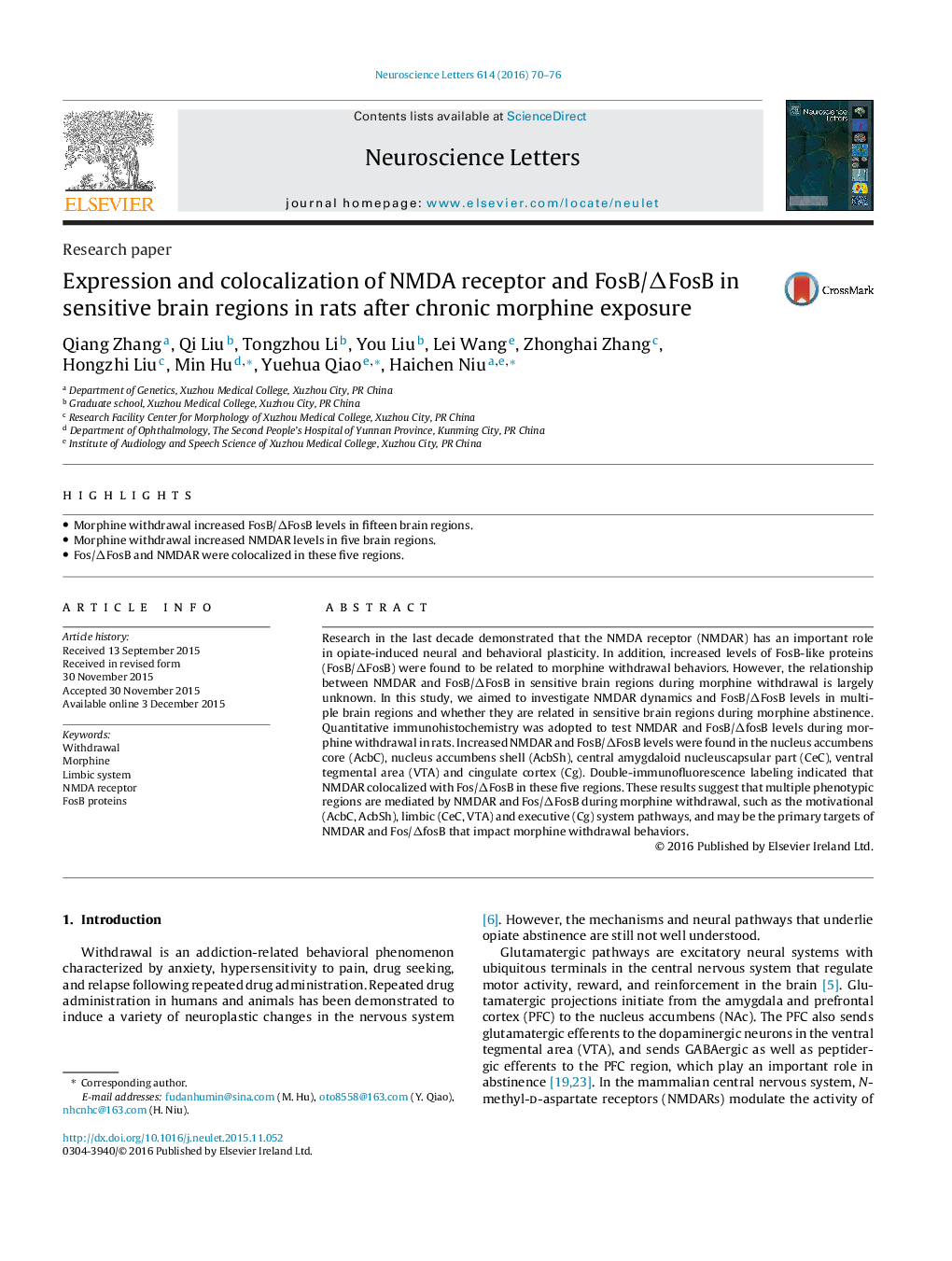| Article ID | Journal | Published Year | Pages | File Type |
|---|---|---|---|---|
| 6280160 | Neuroscience Letters | 2016 | 7 Pages |
â¢Morphine withdrawal increased FosB/ÎFosB levels in fifteen brain regions.â¢Morphine withdrawal increased NMDAR levels in five brain regions.â¢Fos/ÎFosB and NMDAR were colocalized in these five regions.
Research in the last decade demonstrated that the NMDA receptor (NMDAR) has an important role in opiate-induced neural and behavioral plasticity. In addition, increased levels of FosB-like proteins (FosB/ÎFosB) were found to be related to morphine withdrawal behaviors. However, the relationship between NMDAR and FosB/ÎFosB in sensitive brain regions during morphine withdrawal is largely unknown. In this study, we aimed to investigate NMDAR dynamics and FosB/ÎFosB levels in multiple brain regions and whether they are related in sensitive brain regions during morphine abstinence. Quantitative immunohistochemistry was adopted to test NMDAR and FosB/ÎfosB levels during morphine withdrawal in rats. Increased NMDAR and FosB/ÎFosB levels were found in the nucleus accumbens core (AcbC), nucleus accumbens shell (AcbSh), central amygdaloid nucleuscapsular part (CeC), ventral tegmental area (VTA) and cingulate cortex (Cg). Double-immunofluorescence labeling indicated that NMDAR colocalized with Fos/ÎFosB in these five regions. These results suggest that multiple phenotypic regions are mediated by NMDAR and Fos/ÎFosB during morphine withdrawal, such as the motivational (AcbC, AcbSh), limbic (CeC, VTA) and executive (Cg) system pathways, and may be the primary targets of NMDAR and Fos/ÎfosB that impact morphine withdrawal behaviors.
